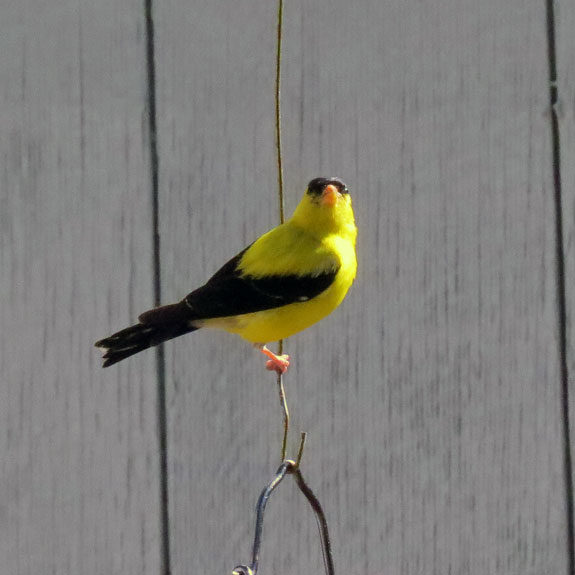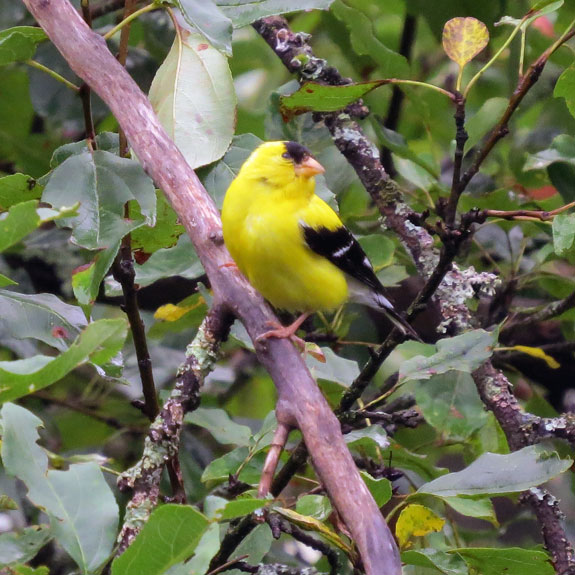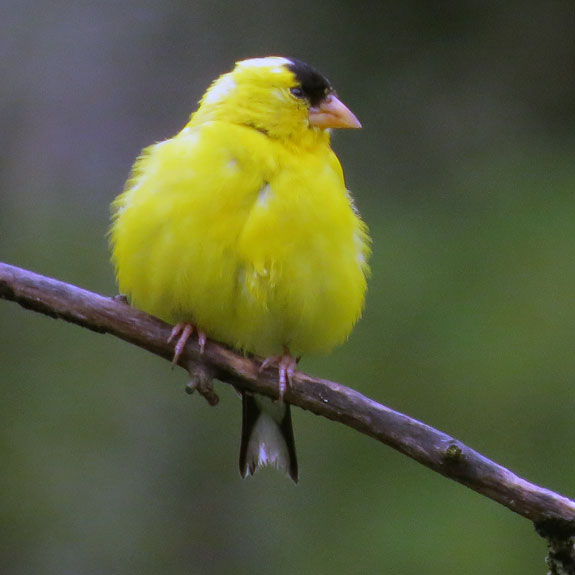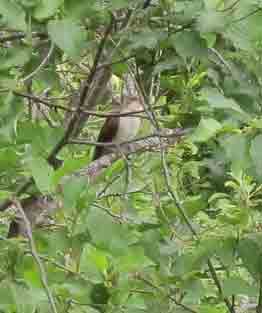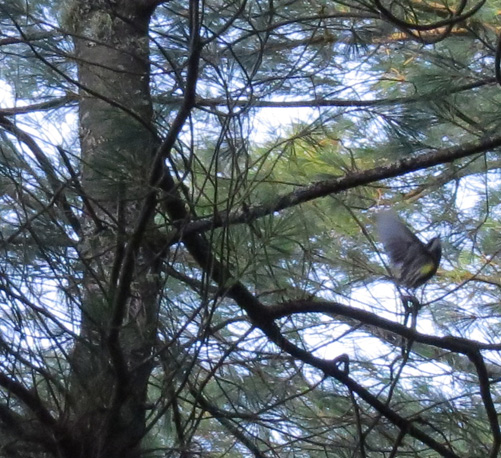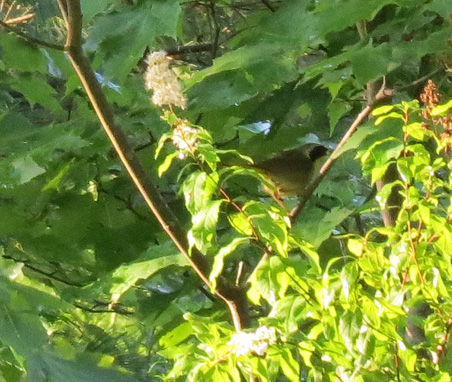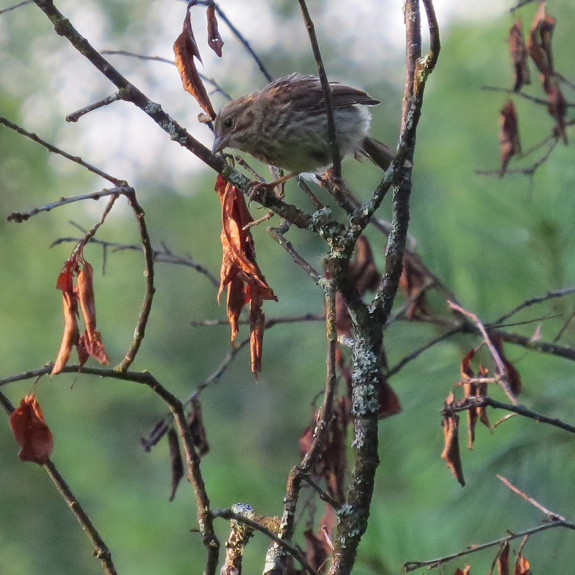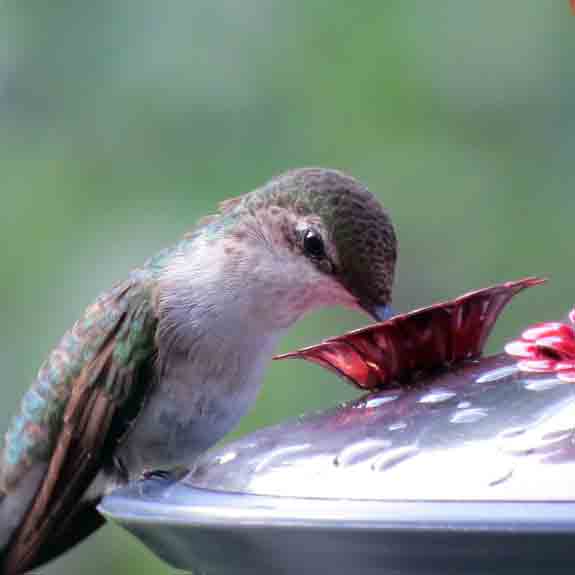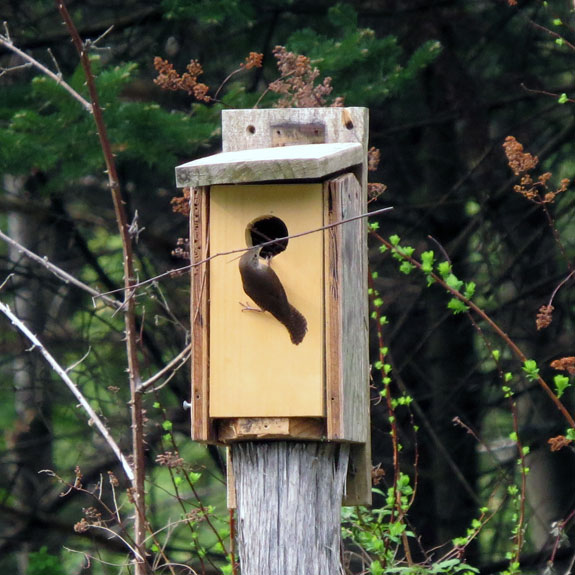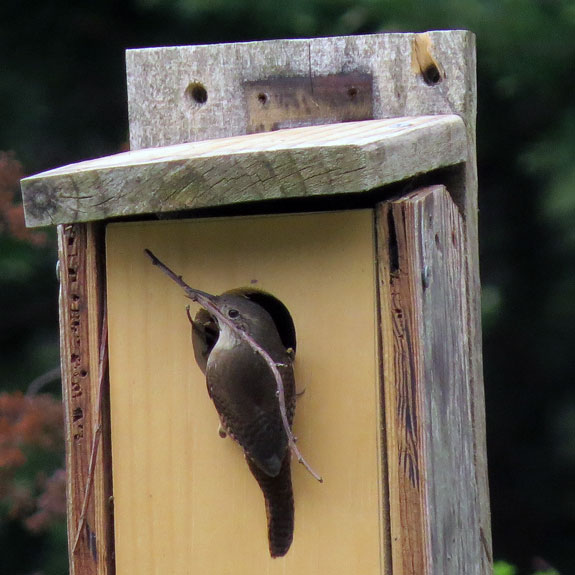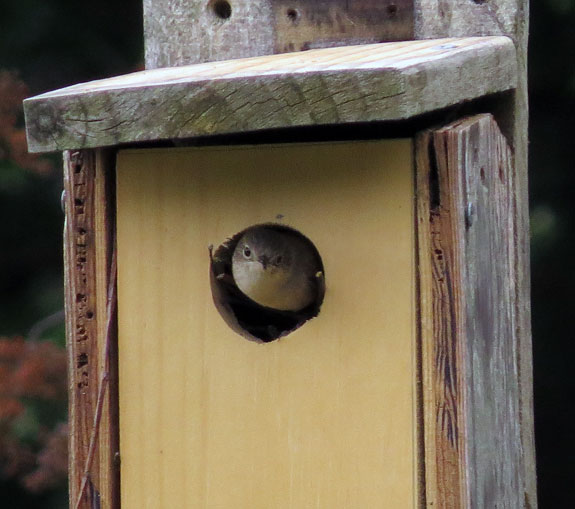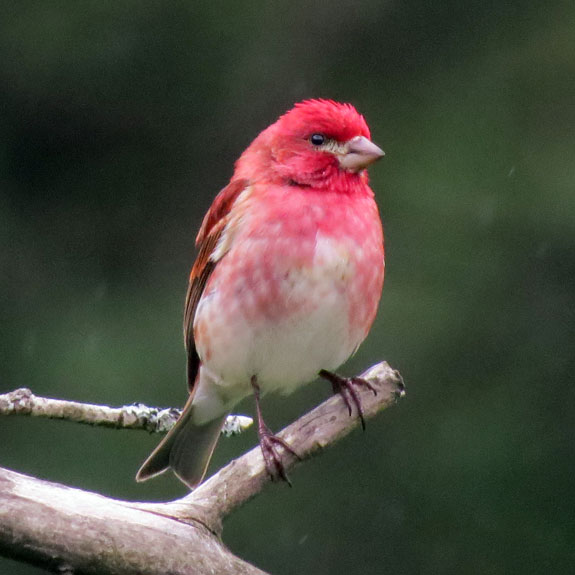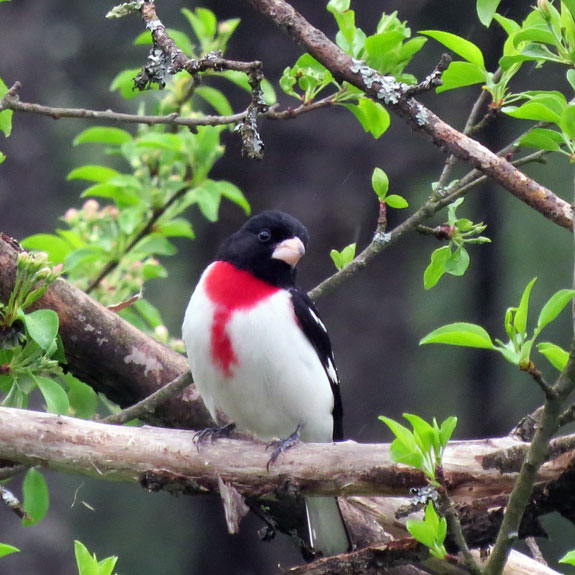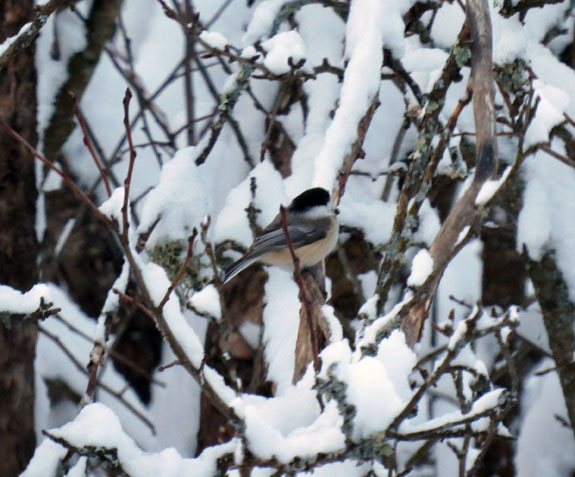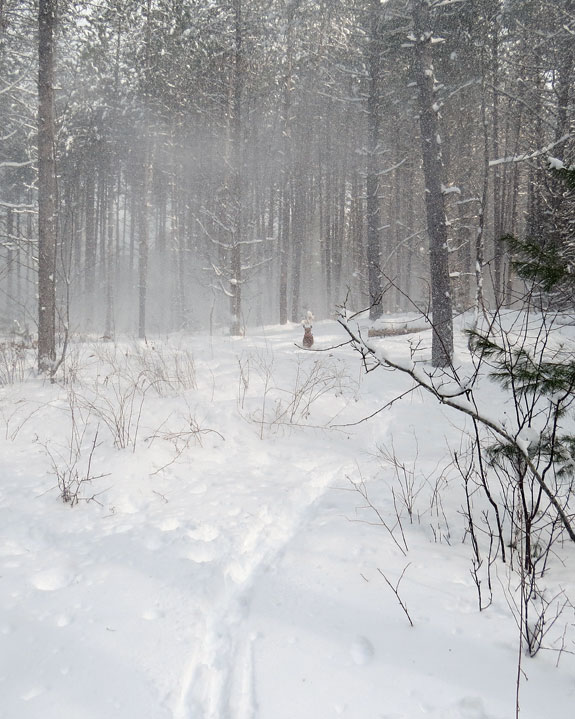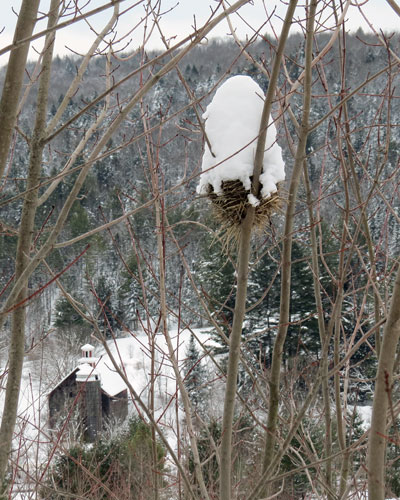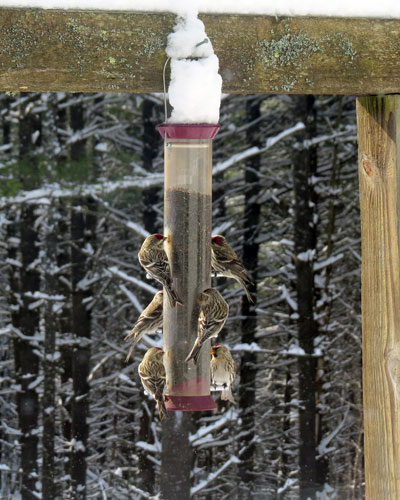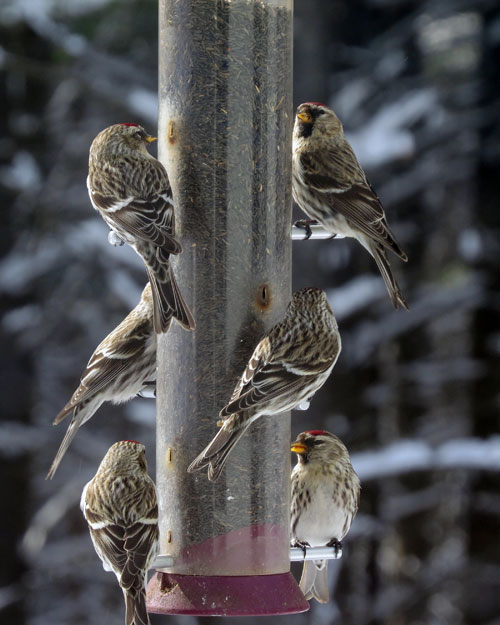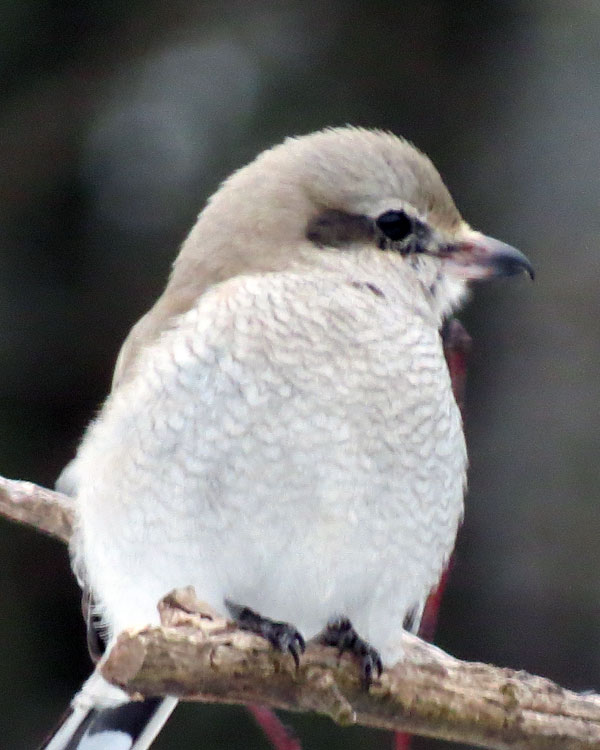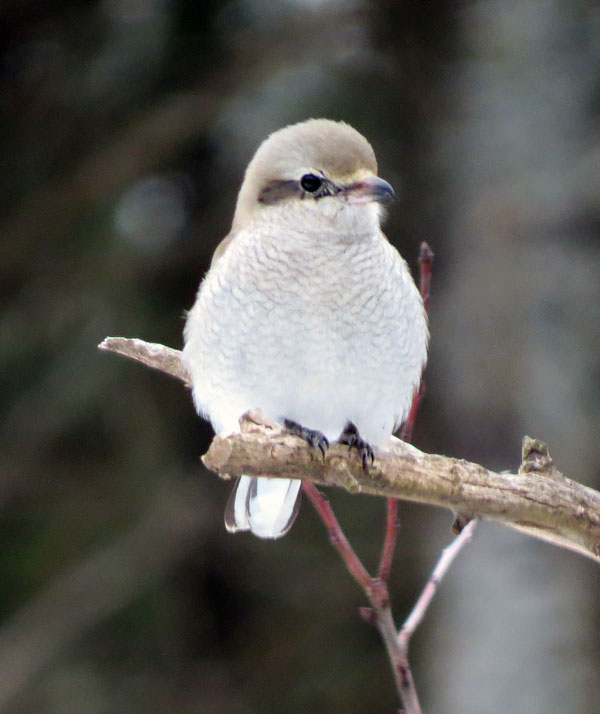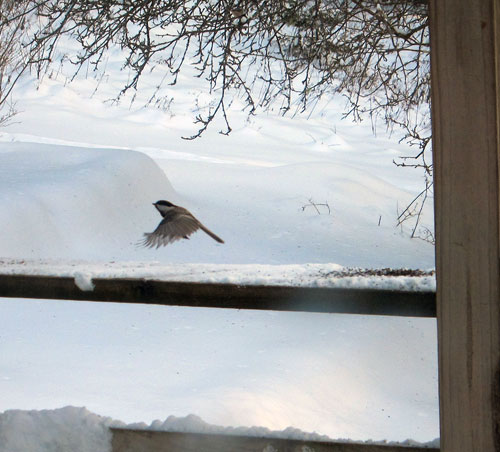In spite of the long spell of hot, humid weather, it’s been fun to see and hear all the fledglings and juveniles — this seems to be the best year we’ve had for nesting in our woods. After a spring of two or three Purple Finches, suddenly we have eight to a dozen hitting the feeders, trying to figure out how to handle sunflower seeds.
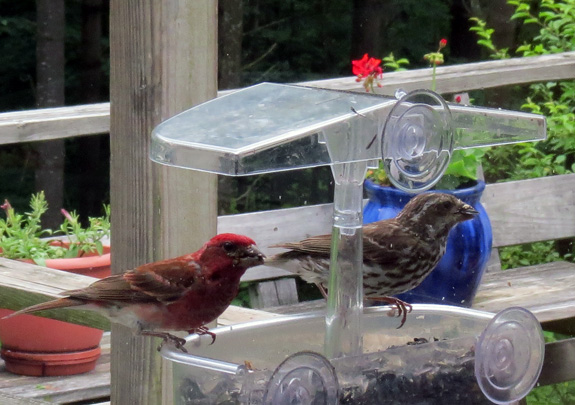
At times, purple finches swarm the feeders.
This afternoon, the dog and I had an explosion of about a dozen juvenile Ruffed Grouse blast out of the tall grass just up behind the house as we started a walk. Of course, she’s a bird dog and supposed to point but she just takes off after them. One perched on low pine branch, saw the red flash coming, and thought better of it. They were big enough to fly well and the dog gave up right away. (Earlier in the season, I worry about the chicks and their peeping, but usually the mom, with her wounded bird act, draws off the Vizsla.)
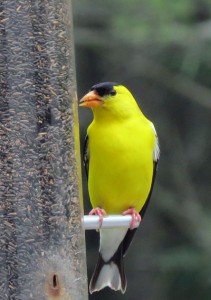
Some of the goldfinches in their new plumage are just striking – and they seem to know it.
I know it’s not recommended in many circles, but we keep up feeders all summer, taking them in each night. The birds don’t necessarily need the food but it’s wonderful to see the new crops of birds coming in each day. We’ve had young Rose-breasted Grosbeaks for the first time ever, and more Red-breasted Nuthatches than I can ever recall. Of course, the new crop of Blue Jays are eating us out of house and home as they hit the suet hard when the woodpeckers are not on it. At one point, I figured it was costing us a dollar a day to feed those beautiful blue birds — until we started shooing them off or pulling the suet feeder in part of the day.
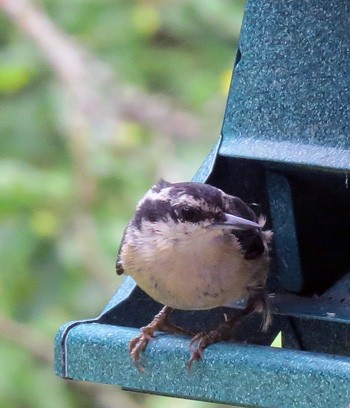
Several young nuthatches are getting comfortable at the feeder.
Even the Mourning Doves are in the act. Instead of two or four, we now often have six or eight — several of them definitely juveniles. Hairy Woodpeckers feed suet to noisy youngsters who look old enough to fend for themselves.
It’s fun to hear all the bird calls in the early morning walks. We seem to have doubled the number of Ovenbirds and the new ones seem less wary and more inquisitive as we walk by. White-throated Sparrows practice their call — it reminds me of when they first get back on territory and get part of their call out, try again, and finally get it right. I hear warblers every morning — Nashville, Northern Parula, Black-throated Green, Black and White, and Pine — and others that are drowned out by the constant Ovenbird calling.
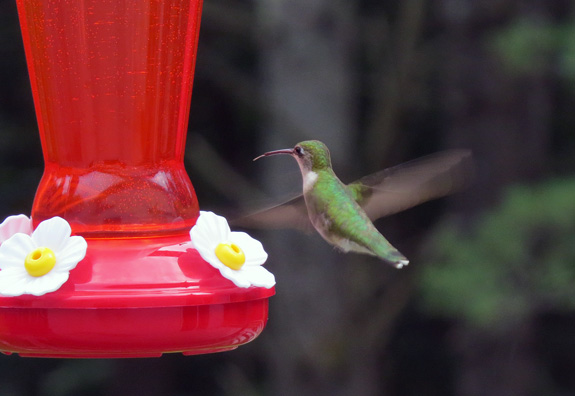
The new crop of hummers are tanking up every day.
These summer days have some poignancy as well since I know that the new plumage and the building up of energy stores is part of the preparation for migration. Summer is usually a quiet time for birders but why not stop and seize the moment and enjoy the birds in our “patch.”

